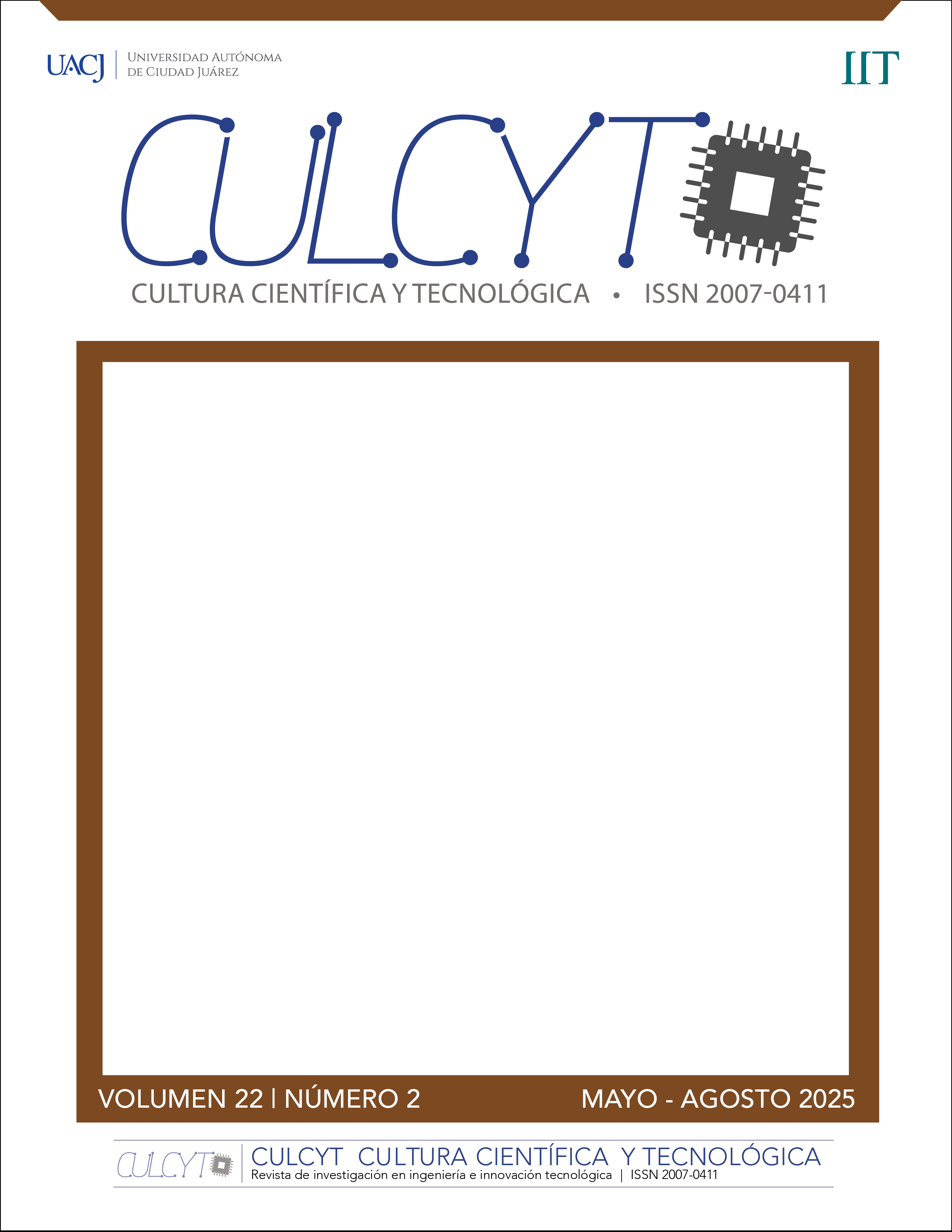Genetic Algorithms and Repurposed Electronics: Revolutionizing E-Waste Mitigation
DOI:
https://doi.org/10.20983/culcyt.2025.2.2e.3Keywords:
genetic algoirthm, e-waste, electronic waste, e-waste solutionAbstract
The fast pace of technological advancement and consumer demand contribute to an ever-growing accumulation of electronic waste. These devices' improper disposal and inadequate recycling have led to environmental degradation and potential health hazards due to hazardous substances. Moreover, this issue also adds to the depletion of valuable resources. To address the e-waste problem, innovative approaches are crucial. Many solutions attempt to exploit e-waste by having the obsolete devices perform work less substantially than initially designed. This study, in contrast, demonstrates that it is possible to repurpose e-waste electronics for sophisticated jobs. Specifically, the power of CPU boards from outdated tablets was harnessed to execute genetic algorithms. The successful results from the experiments in this study show that it is possible to use outdated devices to perform tasks such as fine-tuning antennas and attitude optimization of aerospace devices. By transforming discarded electronics into valuable resources for specific applications, we can help mitigate the environmental impact and contribute to a more responsible technological ecosystem.
Downloads
References
Statista, “Global e-waste - statistics & facts,” 2023. [Online]. Available: https://www.statista.com/topics/3409/electronic-waste-worldwide/#topicOverview
S. M. Abdelbasir, S. S. Hassan, A. H. Kamel, and R. S. El-Nasr, “Status of electronic waste recycling techniques: a review,” Environ Sci Pollut Res, vol. 25, pp. 16533–16547, 2018, doi: 10.1007/s11356-018-2136-6.
V. Forti, C. P. Baldé, R. Kuehr, and G. Bel, Global e-waste monitor 2020: Quantities, flows and the circular economy potential, Geneva: UNU/UNITAR/SCYCLE Programme/ITU/International Solid Waste Association, 2020.
M. Farjana, A. B. Fahad, S. E. Alam, and M. M. Islam, “An IoT-and cloud-based e-waste management system for resource reclamation with a data-driven decision-making process,” IoT, vol. 4, no. 3, pp. 202–220, 2023, doi: 10.3390/iot4030011.
S. Kim and E. Paulos, “Practices in the creative reuse of e-waste,” in Proceedings of the SIGCHI Conference on Human Factors in Computing Systems, 2011, pp. 2395–2404, doi: 10.1145/1978942.1979292.
D. Coughlan, C. Fitzpatrick, and M. McMahon, “Repurposing e-waste as a driver for resource efficiency,” in EnviroInfo/ICT4S (2), 2015, p. 238.
J. Lepawsky and C. Mather, “From beginnings and endings to boundaries and edges: rethinking circulation and exchange through electronic waste,” Area, vol. 43, no. 3, pp. 242–249, 2011.
D. E. Goldberg, Genetic Algorithms in Search, Optimization & Machine Learning, Addison-Wesley Publishing, 1989.
section.io, “The basics of genetic algorithms in machine learning.” [Online]. Available: https://www.section.io/engineering-education/the-basics-of-genetic-algorithms-in-m
T. L. M. Team, “Linux Mint,” 2006. [Online]. Available: https://linuxmint.com/
A. Remi-Omosowon, “pyeasyga: A simple and easy-to-use implementation of a genetic algorithm library in Python,” 2014. [Online]. Available: https://github.com/remiomosowon/pyeasyga
T. R. Project, “Ray: A unified framework for scaling AI and Python applications,” 2016. [Online]. Available: https://github.com/ray-project/ray
T. B. P. Team, “Bullet Physics: Real-time collision detection and multi-physics simulation for VR, games, visual effects, robotics, machine learning, etc.,” 2013. [Online]. Available: https://github.com/bulletphysics/
T. AVSLab, “Basilisk: An open-source astrodynamics simulation framework,” 2015. [Online]. Available: https://github.com/AVSLab/basilisk
ARRL, ARRL Antenna Book: The Ultimate Reference for Amateur Radio Antennas, Transmission Lines And Propagation. ARRL, The National Association for Amateur Radio, 2019.
P. C. Hughes, Spacecraft attitude dynamics. Courier Corporation, 2012.
L. Liberti, C. Lavor, N. Maculan, and A. Mucherino, “Euclidean distance geometry and applications,” SIAM Review, vol. 56, no. 1, pp. 3–69, 2014, doi: 10.1137/120875909.
Statista, “Average lifespan of consumer tablets,” 2023. [Online]. Available: https://www.statista.com/statistics/267473/average-tablet-life
Downloads
Published
How to Cite
Issue
Section
License
Copyright (c) 2025 Michael Dorin

This work is licensed under a Creative Commons Attribution-NonCommercial 4.0 International License.
Todos los contenidos de CULCYT se distribuyen bajo una licencia de uso y distribución “Creative Commons Reconocimiento-No Comercial 4.0 Internacional” (CC-BY-NC). Puede consultar desde aquí la versión informativa de la licencia.
Los autores/as que soliciten publicar en esta revista, aceptan los términos siguientes: a) los/las autores/as conservarán sus derechos de autor y garantizarán a la revista el derecho de primera publicación de su obra; y b) se permite y recomienda a los/las autores/as agregar enlaces de sus artículos en CULCYT en la página web de su institución o en la personal, debido a que ello puede generar intercambios interesantes y aumentar las citas de su obra publicada.



